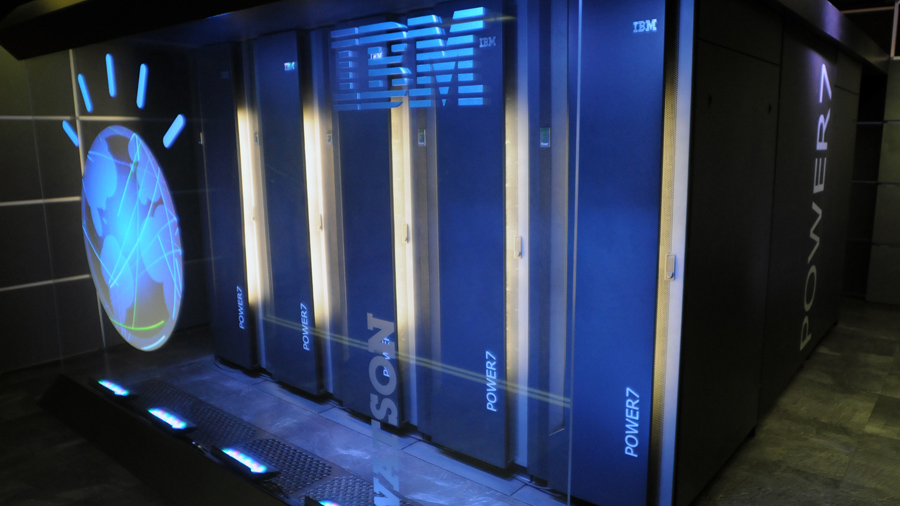Narrow AI is the Filofax of the 21st Century
Artificial intelligence is the organiser of the future

Back in the 1980s and early 1990s the Filofax was de rigueur for execs who wanted to be seen to be going places. But while it was a symbol it was also a useful tool. It combined a replaceable diary with a contacts book and notes pages, and you could have all sorts of extras, including a plastic insert page to hold a calculator.
Back in the day this was pretty sophisticated stuff. Now we expect all of this and much, much more on a smartphone. The problem is that even though we do have access to lots of very useful digital tools on single devices they are not actually in one place. They are scattered around on different apps. What is needed is something to bring all of the information sources together and make them work in context. The answer is narrow AI (artificial intelligence).
Multiple layers
Narrow AI is not technically sophisticated, but what you can do with it is set specific tasks to find relevant bits of information and get it to report findings in context to create accurate reporting or pictures of given scenarios. The key is to program it to perform complementary tasks in multiple layers in order to build really useful information.
For example, a good update to a Filofax would be to program narrow AI so that you could create a meeting organiser tool requiring the minimum of effort to use, that would tell you all the essential information needed to arrive at meetings on time and informed.
Ideally what you would do is use the technology to link lots of information including profiles of all those who will be present at the meeting and recent exchanges of email with them, relevant company profiles, recent tweets by any of those involved, plus a journey planner that gives travel options with travel times, route plans and a map. It would be a complete all-in-one comprehensive guide to every meeting, and available with a few taps on the smartphone screen.
Actually my company created such an app, but it is perfectly possible to create a similar narrow AI program that could be networked at corporate level and include lots of additional services, including the ability to attach or circulate cloud-held documents needed at meetings.
Far more potential
Narrow AI is already used by train and airline ticket websites so that consumers can search journey options and prices – but it could do so much more. It could provide legroom comparisons, and ratings for punctuality, catering, customer service and check-in processing. The list could go on and what you would get is an accurate picture of what you are buying into, not just how much you will pay. Clearly this would have an impact on customer services levels and the performance of airlines, but not as much I suspect on the rail companies.
Sign up to the TechRadar Pro newsletter to get all the top news, opinion, features and guidance your business needs to succeed!
Narrow AI was famously used in baseball in the assessment of players resulting in the bestselling book and film of the same name Moneyball. Narrow AI was used to identify the best performing mid-priced players. The assessment and calculation worked and the team concerned, the Oakland Athletics, recruited a team with a wage bill that was one-third of those teams it performed as well as, though how exciting the side was to watch is another matter.
So narrow AI can be programmed to organise in all sorts of ways. This inevitably leads to the question of when it will be able to do the thinking and organising for us? There is little question within the AI community that the arrival of IT with creative thought process is more a matter of time, not conjecture. The consensus is that we will first see it in 2035, but we need to be guarded about our expectations of what it will be.
Dangerous blinkers
Like all AI, the 'strong' version is likely to have a fairly blinkered view of its tasks, but within a particular remit may become creative in ways we may not appreciate. For example, you may ask it to find the fastest method of travel to get from London to Birmingham.
Once it decides on the route, let's say by rail, it may consider the most effective way to get you to the Midlands on time is to hack into the central rail network computer and halt every single train that could possibly delay the one it has booked for you. In different situations it might have a similar influence on road or air networks.
The problem will not be getting strong AI to try and help us, it may well be writing a very lengthy list of logical behaviour it is not allowed to undertake. The really big problem might come when we ask it to eradicate a human disease. In this situation it may decide that logically the best course of action is to eradicate humans. The decision would be effective, but it would rather defeat the motivation behind the request.
For the time being we can stick to the use of the narrow version of AI to help us organise ourselves more efficiently in all sorts of ways.
- David Senior is CEO of Lowdownapp Ltd. With nearly 20 years' experience in IT he has worked for leading global corporations, but in the last two years co-founded two companies, Spark33 Ltd to advise CxO's on mobile and mobile apps, and Lowdownapp to focus on the use of narrow AI in the creation of multi-layered contextual information based mobile apps.